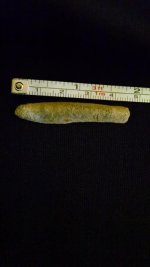Well, this was found on a Civil War re-enactors site.
"MORE THAN YOU EVER WANTED TO KNOW ABOUT THE PENCIL:
Sometime before 1565 (some sources say as early as 1500), an enormous deposit of graphite was discovered on the approach to Grey Knotts from the hamlet of Seathwaite in Borrowdale parish, Cumbria, England. This particular deposit of graphite was extremely pure and solid, and it could easily be sawn into sticks. Chemistry was in its infancy and the substance was thought to be a form of lead. Consequently, it was called plumbago (Latin for "lead ore"). The black core of pencils is still referred to as lead, even though it never contained the element lead.
William Munroe, a cabinetmaker in Concord, Massachusetts, made the first American wood pencils in 1812.
Munroe's method of making pencils was painstakingly slow, and in the neighboring town of Acton, a pencil mill owner named Ebenezer Wood set out to automate the process. He constructed the first of the hexagon- and octagon-shaped wooden casings. A juniper or incense-cedar plank with several long parallel grooves is cut to fashion a "slat," and graphite/clay strings are inserted into the grooves. Another grooved plank is glued on top, and the whole assembly is then cut into individual pencils, which are then varnished or painted.
The majority of pencils made in the US are painted yellow. This tradition began in 1890 when the L. & C. Hardtmuth Company of Austria-Hungary introduced their Koh-I-Noor brand, named after the famous diamond. It was intended to be the world's best and most expensive pencil, and at a time when most pencils were either painted in dark colors or not at all.
Although lead has not been used for writing since antiquity, lead poisoning from pencils was not uncommon. Until the middle of the 20th century the paint used for the outer coating could contain high concentrations of lead and this could be ingested when the pencil was sucked or chewed. "



